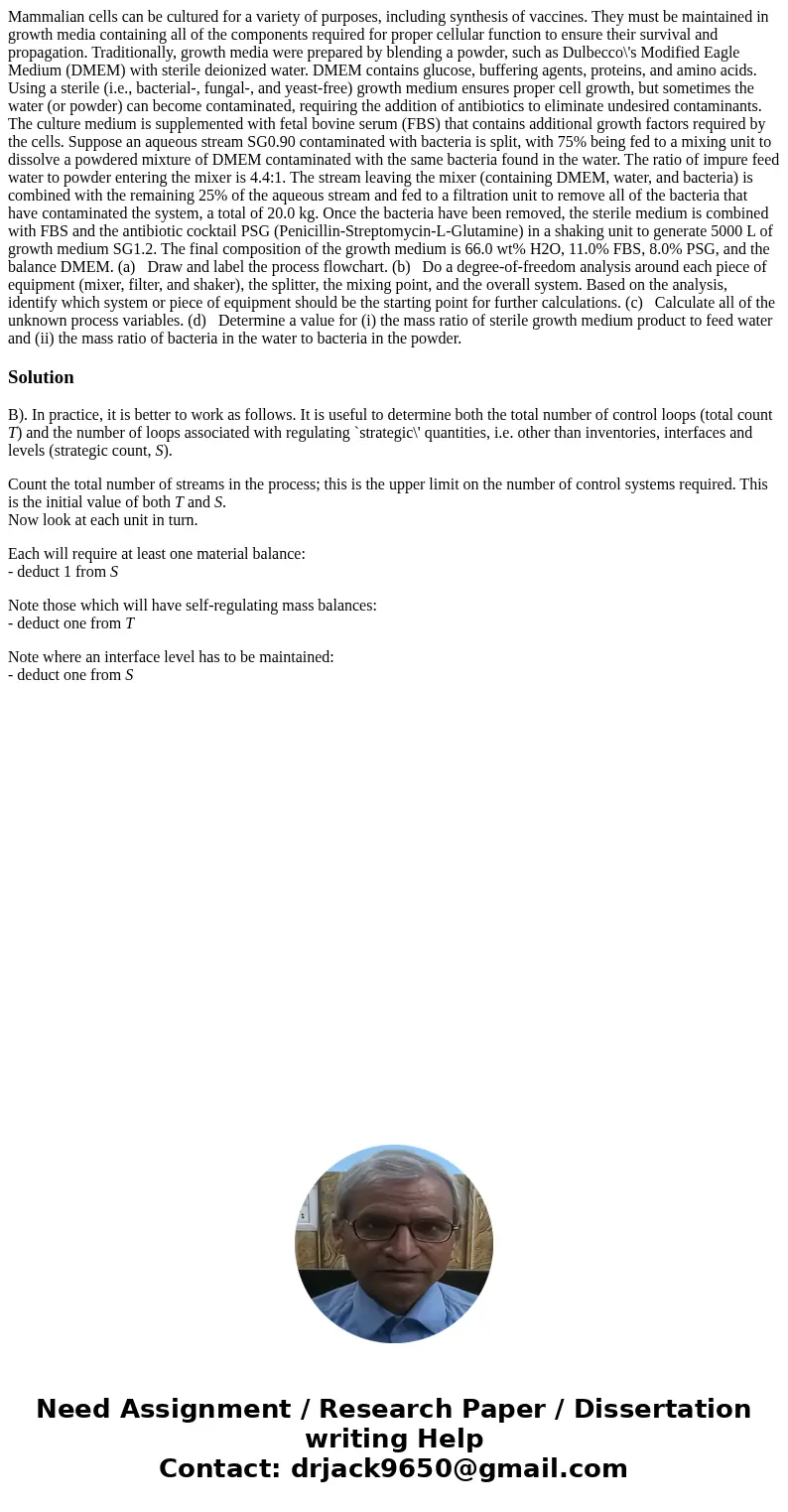Mammalian cells can be cultured for a variety of purposes in
Mammalian cells can be cultured for a variety of purposes, including synthesis of vaccines. They must be maintained in growth media containing all of the components required for proper cellular function to ensure their survival and propagation. Traditionally, growth media were prepared by blending a powder, such as Dulbecco\'s Modified Eagle Medium (DMEM) with sterile deionized water. DMEM contains glucose, buffering agents, proteins, and amino acids. Using a sterile (i.e., bacterial-, fungal-, and yeast-free) growth medium ensures proper cell growth, but sometimes the water (or powder) can become contaminated, requiring the addition of antibiotics to eliminate undesired contaminants. The culture medium is supplemented with fetal bovine serum (FBS) that contains additional growth factors required by the cells. Suppose an aqueous stream SG0.90 contaminated with bacteria is split, with 75% being fed to a mixing unit to dissolve a powdered mixture of DMEM contaminated with the same bacteria found in the water. The ratio of impure feed water to powder entering the mixer is 4.4:1. The stream leaving the mixer (containing DMEM, water, and bacteria) is combined with the remaining 25% of the aqueous stream and fed to a filtration unit to remove all of the bacteria that have contaminated the system, a total of 20.0 kg. Once the bacteria have been removed, the sterile medium is combined with FBS and the antibiotic cocktail PSG (Penicillin-Streptomycin-L-Glutamine) in a shaking unit to generate 5000 L of growth medium SG1.2. The final composition of the growth medium is 66.0 wt% H2O, 11.0% FBS, 8.0% PSG, and the balance DMEM. (a) Draw and label the process flowchart. (b) Do a degree-of-freedom analysis around each piece of equipment (mixer, filter, and shaker), the splitter, the mixing point, and the overall system. Based on the analysis, identify which system or piece of equipment should be the starting point for further calculations. (c) Calculate all of the unknown process variables. (d) Determine a value for (i) the mass ratio of sterile growth medium product to feed water and (ii) the mass ratio of bacteria in the water to bacteria in the powder.
Solution
B). In practice, it is better to work as follows. It is useful to determine both the total number of control loops (total count T) and the number of loops associated with regulating `strategic\' quantities, i.e. other than inventories, interfaces and levels (strategic count, S).
Count the total number of streams in the process; this is the upper limit on the number of control systems required. This is the initial value of both T and S.
Now look at each unit in turn.
Each will require at least one material balance:
- deduct 1 from S
Note those which will have self-regulating mass balances:
- deduct one from T
Note where an interface level has to be maintained:
- deduct one from S

 Homework Sourse
Homework Sourse